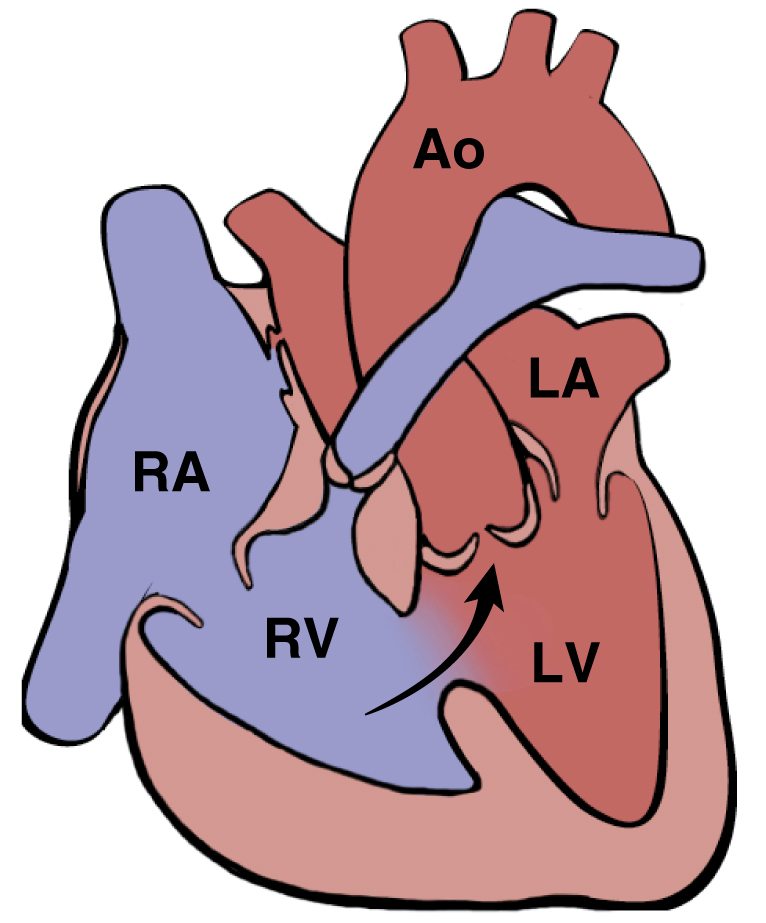tetralogy of Fallot /falō″/ [Gk, tetra, four, logos, word; Etienne-Louis A. Fallot, French physician, 1850–1911] , a congenital cardiac anomaly that consists of four defects: pulmonary stenosis, ventricular septal defect, malposition of the aorta so that it arises from the septal defect or the right ventricle, and right ventricular hypertrophy. The primary symptoms in the infant are cyanosis, hypoxia, difficulty in feeding, failure to gain weight, and poor development. In older children a squatting position and clubbing of the fingers and toes are evident. A pansystolic murmur is usually heard, and the second heart sound is faint or absent. Diagnosis of the condition is primarily based on the patient’s history and physical symptoms, although cardiac catheterization is performed to evaluate the severity of the defects. Initial treatment consists mainly of supportive measures and palliative surgical procedures, primarily systemic to pulmonary anastomoses to decrease tissue hypoxia and prevent complications until the child is old enough to tolerate total corrective surgery. The optimal age for surgical repair is approximately 1 year. Also called Fallot’s syndrome. See also blue baby, trilogy of Fallot.

